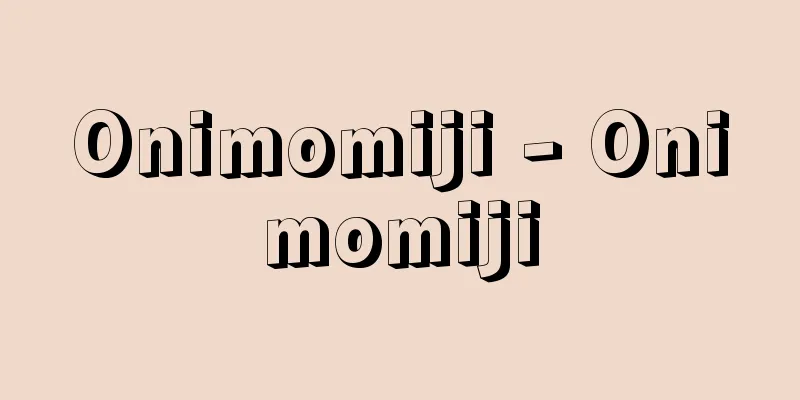Sotoba Komachi - Sotoba Komachi

|
Noh piece. Fourth piece. Five-school contemporary piece. Written by Kan'ami. A madwoman piece full of dramatic ups and downs, and treated with great respect as a piece about an old woman. A monk (waki and wakitsure) from Mount Koya arrives in Abeno, Tsu Province (Osaka Prefecture). Ono no Komachi (shite), 100 years old and reduced to the status of a beggar, appears there. She left the capital feeling ashamed of being seen by others, but sits down on a rotten tree because she is in pain. The monk realizes that it is a stupa carved with the body of a Buddha and tries to persuade her to rest elsewhere, but Komachi refuses and ends up defeating the monk in a debate about Buddhism. Kan'ami is an unparalleled writer who portrays the fun of such conversations. Komachi ridicules the monk, saying, "In paradise, you should be troubled, but outside (a pun on the word 'sotsuba'), you should suffer." When asked her name, she tells him that she is the remains of Ono no Komachi, laments her current situation, and suddenly becomes insane. She is possessed by the vengeful spirit of Fukakusa no Shosho, who died on the last night of the 100 nights Komachi imposed on her. In the form of Shosho, the suffering and death of the Shosho are reenacted, but Komachi eventually turns to Buddhism and ends the piece with a prayer for the afterlife. It is known from Zeami's Sarugaku Dangi that the second half of the play used to unfold differently. Yukio Mishima's "Sotsuba Komachi" from his "Modern Noh Plays" is considered one of the best plays written after the Second World War. [Masuda Shozo] [Reference] |Source: Shogakukan Encyclopedia Nipponica About Encyclopedia Nipponica Information | Legend |
|
能の曲目。四番目物。五流現行曲。観阿弥(かんあみ)の作。劇的な波瀾(はらん)に満ちた狂女物で、老女物として重く扱われる。高野山(こうやさん)の僧(ワキとワキツレ)が、津国(つのくに)(大阪府)安倍野(あべの)に着く。そこへ百歳に及び乞食(こじき)の境涯に落ちぶれた小野小町(シテ)が登場、人目を恥じつつ都を出てきたが、苦しいからと朽ち木に腰をおろす。僧は、それが仏体を刻んだ卒都婆であることに気づき、ほかで休むように説得するが、小町は逆に居直り、仏教論争のすえに僧を言い負かしてしまう。こうした会話のおもしろさを描いて、観阿弥は比類ない作家である。小町は「極楽の内ならばこそ悪(あ)しからめ、そとは(卒都婆に掛ける洒落(しゃれ))何かは苦しかるべき」と僧を嘲笑(ちょうしょう)する。名を尋ねられた彼女は、小野小町のなれの果てであることを語り、いまの身の上を嘆くが、突如狂乱状態となる。小町が課した百夜通いの、その最後の夜に死んだ深草少将の怨霊(おんりょう)が取り憑(つ)いたのである。少将の姿となってその苦難と死のありさまが再現されるが、やがて小町は仏道に心を寄せ、後世を願う態で終曲となる。昔は後半が違う展開であったことが、世阿弥(ぜあみ)の芸談『申楽談義(さるがくだんぎ)』によって知られる。なお三島由紀夫の『近代能楽集』の「卒塔婆小町」は、第二次世界大戦後の優れた戯曲の一つとされる。 [増田正造] [参照項目] |出典 小学館 日本大百科全書(ニッポニカ)日本大百科全書(ニッポニカ)について 情報 | 凡例 |
<<: Sotoba-ryu - Sotobanagashi
Recommend
Eliseev, GZ - Eliseev
...At first, it was edited and published by A. A....
Cricetus cricetus (English spelling) Cricetus cricetus
…They vary in size, with the smallest species bei...
Iga River
A river flowing westward in the northern part of t...
Battle of Kosovo - Battle of Kosovo
In 1389, the Ottoman Empire, which had been advanc...
Alpers, A.
…Other works that include retellings of Maori myt...
hodograph
…velocity as a vector is represented by an arrow ...
Abietic acid - Abiechinsan (English spelling) abietic acid
A carboxylic acid belonging to the tricyclic dite...
Drobeta
…The capital of Mehedinci County. Its official na...
Lin Shuang-wen (English spelling)
[raw]? [Died] 1788, Beijing. Leader of the Taiwan ...
Shimomura Kanzan
A Japanese painter. His family had served the Kis...
diapositive
…diapositive (positive transparency) is a photogr...
Levi
French orientalist. He studied Sanskrit at the Uni...
Rugosaurus
Also known as Hamanashi. A deciduous shrub of the ...
Tachibana Bok - Tachibana Shiraki
Journalist and China scholar. Born in Oita Prefect...
molar elevation
… ⊿ T = K b n = K b w / M n is the amount of solu...









